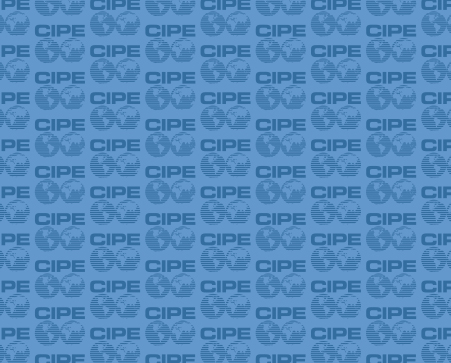Emily Drew is a researcher and writer for the Business Civic Leadership Center (BCLC), a nonprofit affiliate of the U.S. Chamber of Commerce.
If you were a woman in rural Benin today, you would spend 10 hours each week carrying food and water. As a Tanzania Masaai woman, you would walk up to 30 kilometers to collect water in the dry season and, of course, walk back with your liquid burden.
“Women’s time poverty and income poverty often reinforce each other with negative impacts,” the World Bank reports. A woman’s time in the formal economy—getting an education, holding a job, starting her own business, or cultivating surplus agriculture—means less time she can spend on household duties. In most places today, women and girls simply don’t have an option of how to spend their time. If they don’t get water, they go thirsty, and if they don’t get firewood, they don’t eat.
If you’re reading these facts, you’re probably not a Masaai woman or a rural woman in Benin. You are probably a woman or man who has some pull to make a difference.
Globally, the picture of women’s lives is grim and infuriating.
- Women work two-thirds of the world’s working hours, produce half of the world’s food, and yet earn only ten percent of the world’s income and own less than one percent of the world’s property.
- Of the 1.3 billion people living in poverty around the world, 70 percent are women.
- In the least-developed countries nearly twice as many women over age 15 are illiterate compared to men.
If you’re reading these facts from the Millennium Campaign’s website, you’re probably not a Masaai woman or a rural woman in Benin. You are probably a woman or man who has some pull somewhere to make a difference, and thankfully, for women and girls, even small moves make a big impact. One extra year of secondary school raises a girl’s lifetime wages by 15 to 25 percent. A well or water-sanitation solution placed in a village suddenly eliminates that 30-kilometer walk. Efficient stoves can help reduce the hours women spend foraging for kindling and fuel, meaning they have more time to improve their lots and their children’s lives.
So how can you help get those stoves, wells, and schools to women everywhere? You could start with listening to stories of success, learning about replicable interventions, and finding out how your business or organization can partner with others already involved. On March 8th, the Chamber BCLC, the UN Office for Partnerships, the Global Business Coalition, the Center for International Private Enterprise, and Girl Up are hosting a one-day conference titled “Investing in Women and Entrepreneurship: Solutions to MDG 3.”
Taking place at the United Nations in New York, the conference will:
- Broaden the range of stakeholders, particularly interested companies, working towards MDG 3,
- increase awareness within the corporate giving community, and
- provide a platform for interested companies to connect with UN agencies and NGOs.
Registration is limited but still available, and you can visit BCLC’s website to learn more about expert speakers and the agenda.
Even if your own daily time trade-offs don’t allow you to be at the event in-person, you can still engage with others trying to build lasting solutions in less time than it would take you to collect water for your family in Tanzania. Videos and blog posts will be updated on BCLCblog throughout the day, and the official Twitter feed of the event is #csrwomen (follow BCLC’s Twitter feed on @chamberBCLC).
This post originally appears on the BCLC Blog.
Published Date: February 28, 2011
